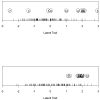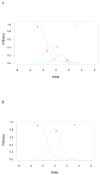Increasing the Sensitivity of Measures to Change
- PMID: 25703381
- PMCID: PMC4547914
- DOI: 10.1007/s11121-015-0545-z
Increasing the Sensitivity of Measures to Change
Abstract
Little attention is paid in prevention research to the ability of measures to accurately assess change, termed "responsiveness" or "sensitivity to change." This paper reviews definitions and measures of responsiveness, and suggests five strategies for increasing sensitivity to change, with central focus on prevention research with small samples: (a) improving understandability and cultural validity, (b) assuring that the measure covers the full range of the latent construct being measured, (c) eliminating redundant items, (d) maximizing sensitivity of the device used to collect responses; and (e) asking directly about change. Examples of the application of each strategy are provided. The discussion focuses on using the issues as a checklist for improving measures and the implications of sensitivity to change for prevention research with small samples.
Keywords: Alaska Native; Item response theory; Sensitivity to change; Small sample methodology.
Conflict of interest statement
The authors declare that they have no conflict of interest.
Figures


References
-
- Allen J, Mohatt G, Fok CCT, Henry D People Awakening Team. Suicide prevention as a community development process: Understanding circumpolar youth suicide prevention through community level outcomes. International Journal of Circumpolar Health. 2009;68:274–291. Retrieved from http://www.ncbi.nlm.nih.gov/pmc/articles/PMC2875412/ - PMC - PubMed
-
- Bartunek JM, Moch MK. First-Order, Second-Order, and Third-Order Change and Organization Development Interventions: A Cognitive Approach. The Journal of Applied Behavioral Science. 1987;23:483–500. doi: 10.1177/002188638702300404. - DOI
-
- Beneke M, Rasmus W. ‘Clinical global impressions’ (ECDEU): some critical comments. Pharmacopsychiatrie. 1992;25:171–176. - PubMed
-
- Campbell DT, Stanley JC, Gage NL. Experimental and quasi-experimental designs for research. Boston, MA, US: Houghton, Mifflin and Company; 1963.
MeSH terms
Grants and funding
LinkOut - more resources
Full Text Sources
Other Literature Sources

